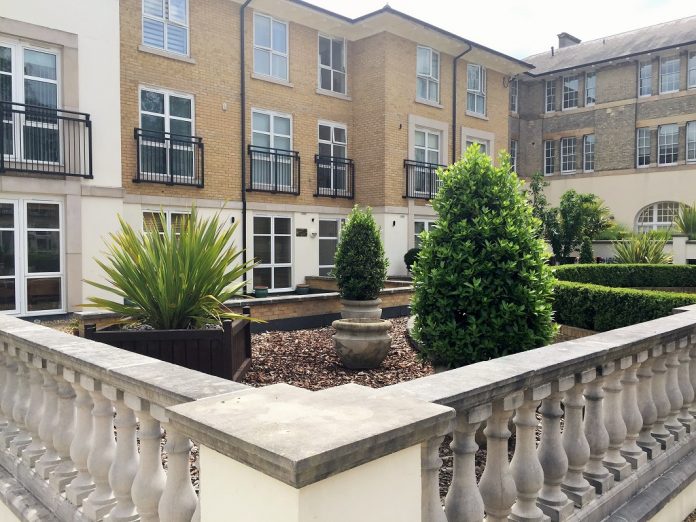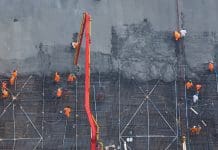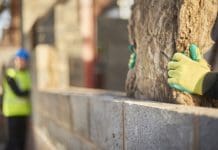Here, James Berry, PCA’s Technical Manager provides insight into the main themes in the “Guidance Document – Podium Decks & Buried Roofs”
The construction of podium decks and buried roofs has been around for some time, but the use of a basement roof structure to extend beyond the building line and under gardens has increased recently.
In line with this rise in popularity, the National trade body The Property Care Association (PCA) has produced the “Guidance Document – Podium Decks & Buried Roofs” to help construction professionals make informed choices in the waterproofing of such structures.
The guide has been launched at a time when PCA specialist structural waterproofing members are telling us that they are receiving an increasing number of calls requesting their advice and expertise to resolve a number of issues.
Like all other waterproofing related failures, these problems can become costly to remedy when they are buried underneath complex fitments, expensive finishes and working or leisure surfaces.
Often, members of the PCA are called in to put forward solutions to remedy the works, but we produced the guide to explain the importance of considering all waterproofing elements in the first place – at the design stage – and not as an afterthought when a problem arises.
To help get this message across, we’ve produced the guide to set out the main differences between podium decks and buried roof structures and advise on the correct design and installation techniques for each about waterproofing.
A clear difference
As mentioned above, the guide explains from the start the importance of understanding the main differences between a podium roof and a buried roof.
The PCA definition of each is;
- A podium deck is a structural element that is an elevated platform or one that has a void underneath it. It may have supporting columns that do not pass through this structural element.
- A buried roof is part of an under-garden structure and in most instances, tends to be part of a basement that extends beyond the line of the main elevations.
The need for guidance
With these definitions in mind, the next step is to gain an overview of the merits and drawbacks of waterproofing each type of construction, at the design stage.
Podium decks constructed of reinforced concrete and correctly designed by an engineer have proven to be the most reliable. In all cases, the substrate must be stable. When there is any risk of potential minor movement, vibration, or flexing to any degree, the best advice would be to consider applying elastomeric or flexible sheet type waterproofers and combinations of those materials suitable for proposed finishes on top of the deck.
Podium decks constructed of pre-cast concrete planks and block and beam floors can be problematic to waterproof successfully. In this regard, consideration should be made to applying screeds to adequate falls and drainage discharge points to provide a more uniform floor to accept the selected waterproofing system.
The failure and leakage of buried roofs often originate at the design stage. Sometimes engineers will specify inappropriate construction materials (from a waterproofing perspective) which can include for example block and beam, rib deck and hollow rib – and these have proven to be problematic to waterproof successfully.
Waterproofing block and beam and other pre-cast individual elements and exposed steel beams have shown to be especially high risk and subject to failure.
Of further note is the fact that, in the early days of retrofit basements and their creation of a buried roof, material built up above the buried roof (over the under-garden sections of basements) could be shallow and quite often had hard paved patio type surfaces.
In recent years, however, there has been recognition of the need for depth of covering – for example, some London Boroughs now insist on a minimum of one metre soil coverage. This change in policy is to preserve green spaces and to help with water retention, reducing peak flows which put pressure on ageing drainage systems when soil has been replaced with hard surfaces.
A professional approach
The options for waterproofing are varied. Ultimately, the choice will depend on the project requirements including service life and durability. Some options include:
- GRP, Seamless resins, epoxy, polyurethanes, polyurea, MMA, some of which can be fast curing;
- Sheet membranes, bitumen based both hot and cold applied PVC and EPDM based sheets;
- Cement based coatings or crystallisation slurries.
Whatever choice is made it is important to bear in mind that the best materials in the world are only as good as the people that install them.
The construction teams must be fully aware of the critical nature of what they are doing, the importance of accuracy and the implications of any defects and errors.
With this in mind, structural waterproofing projects should be undertaken by experts who understand the industry.
We’ve seen that a central component of a successful waterproofing scheme, including podium decks, is to bring experts in from the start of the project at the design stage.
To support this, the PCA provides a searchable register of Waterproofing Design Specialists, a pool of vetted and approved professionals with specialist knowledge and qualifications in structural waterproofing who are able to assist in the design and planning of projects involving underground waterproofing in accordance with BS8102.
This register, available to view at http://www.property-care.org/ProGuidance.RWDS.asp gives architects and construction professionals details of individual, competent practitioners, who can assist in the design and planning of underground waterproofing.
“Guidance Document – Podium Decks & Buried Roofs.” Can be downloaded from the PCA website.
 James Berry
James Berry
Technical Manager
Property Care Association
pca@property-care.org














